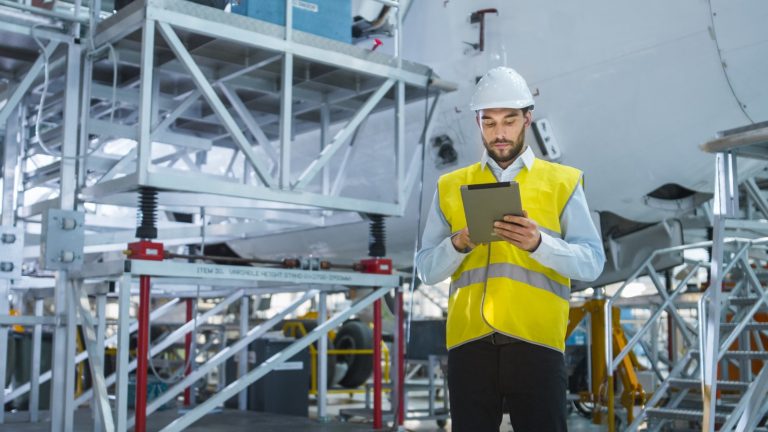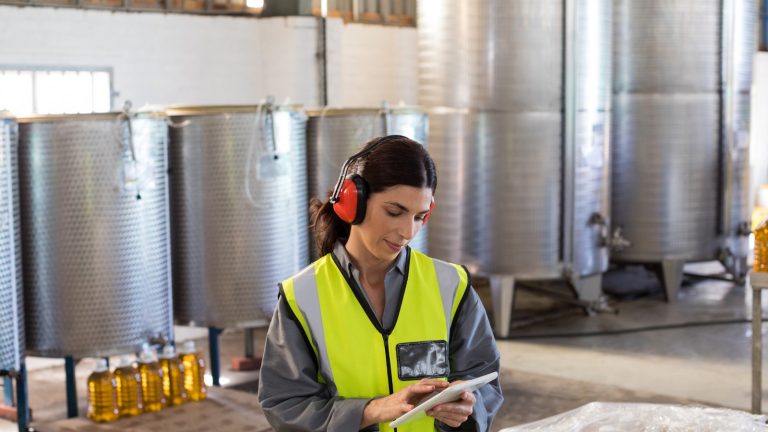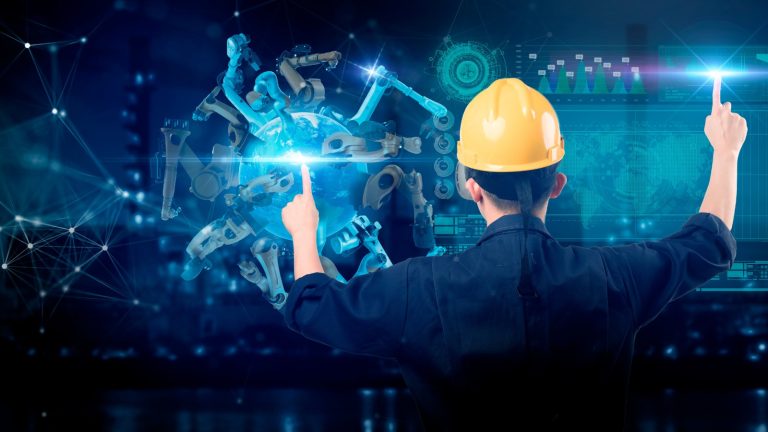Now we have stepped into a world where everything functions through robust technology. In one way, it streamlines our work, especially when it comes to industrial operations. In another way, it saves time and money by expediting processes that cannot be made possible through human labour. Therefore, implementing new technology within the business framework, such as manufacturing and its supply chain, is known to be a win-win situation for both stakeholders and employees. However, navigating through these robust tools is not as easy as it seems to be, as it requires specialised knowledge and training. On the other hand, it is highly important for a manufacturing corporation to keep its workers aware of cutting-edge technology.
In this article, we look into the necessity of sharing technological expertise with manufacturing workers and what a corporation will receive in return for doing so.
We will understand
Understanding the Manufacturing Technological Evolution

- Gone are the days when the manufacturing industry relied on old-fashioned and traditional methods when it came to proceeding with their business operations. Now, they are moving forward with emerging technologies as they understand the importance of staying relevant to changing market demands.
- The evolution of manufacturing technology has been marked by significant advancements from the past to present times. Historically, manufacturing relied heavily on manual labour and basic tools, with limited automation and mechanisation.
- This is where the ‘Industrial Revolution’ received the limelight. It introduced steam power and machinery, revolutionising production processes and increasing output efficiency.
- In the late 20th century, the advent of computers and digital technology ushered in the era of computer-integrated manufacturing (CIM) and automation. This led to the development of computer-aided design (CAD), computer-aided manufacturing (CAM), and robotics, further streamlining operations and enabling mass customisation.
- In recent years, the rise of Industry 4.0 and the Internet of Things (IoT) has brought about the integration of cyber-physical systems, data analytics, and artificial intelligence (AI) into manufacturing processes. This has given life to real-time monitoring, predictive maintenance, and adaptive manufacturing, driving efficiency, flexibility, and customisation to unprecedented levels.
- Today, we witness the evolution of manufacturing technology, and it seems to be characterised by a progressive shift towards automation, digitisation, interconnectedness, etc. This surely leads to more efficient, flexible, and responsive manufacturing systems. The outcome is undoubtedly maximum ROI.
The Top 4 Reasons Why Manufacturing Workers Should Be Aware of New Technology

Enhanced Technology Effectiveness
Involving workers in the process of introducing new technology will surely allow them to act as valuable stakeholders in its implementation.
The theory here is quite simple, though. As end-users, workers possess unique insights into the practical aspects of utilising new technology within their specific roles. When actively engaging workers in assessing risks, evaluating effectiveness, and providing feedback throughout the adoption process, manufacturers can identify and address any usability issues or inefficiencies.
This feedback loop is the basis for the final implementation. The sole purpose behind this is to ensure that it aligns closely with the needs and workflows of the workforce.
What is the point of implementing useless technologies and tools just for the sake of technological utilisation? The ultimate goal has to be boosting productivity and gaining efficiency to certain levels.
If the manufacturers can use the firsthand experiences and perspectives of employees, they are free to refine their technology adoption strategies and enhance usability. This strategy will surely help with overcoming any barriers to effectiveness.
Yes, it will be a collaborative effort that eventually leads to improved overall efficiency and effectiveness in the integration of new technology into manufacturing operations.
Continuity in Technology Utilisation
The latter is highly essential for maximising the return on investment in new technologies within manufacturing operations. Let us explain how this is possible.
When the responsible parties take the necessary actions to keep their workers aware of new technology and involve them in the adoption process, manufacturers can ensure that employees are adequately trained and supported to use the technology effectively.
This strategic yet effective approach helps address any technical issues promptly and encourages ongoing usage among workers. For example, managers will be able to play a crucial role in providing support, coaching, and incentives to motivate workers to embrace and continue using technology in their daily tasks.
This is how it creates a culture of continuous learning and improvement. This way, manufacturers can prevent premature abandonment of new technologies and ensure their sustained integration into the workflow.
This continuity in technology utilisation not only enhances operational efficiency but also maximises the long-term benefits and impact of technological investments within the manufacturing environment.
Improved Employee Satisfaction and Retention
We know that the manufacturing realm is full of various processes and machinery functionalities. Sometimes dealing with them in day-to-day life would be highly stressful for the workers.
However, with just a little strategic approach, manufacturing authorities can prevent this type of friction. We will see how. When manufacturers involve workers in the decision-making process and facilitate their understanding of new technology, it creates a sense of empowerment and investment among employees. Workers feel valued when they are given opportunities to explore and familiarise themselves with new technology. No need to emphasise that they understand its benefits and rationale within the company context.
This transparent communication builds a network that is full of trust and loyalty towards the organisation. As a result, employees are more satisfied with their roles and feel a stronger connection to the company’s goals and success.
When the workers are satisfied with their roles, this increased satisfaction transforms into higher retention rates as employees are less likely to seek opportunities elsewhere. This is why, in the modern manufacturing world, prioritising employee engagement and satisfaction through technology awareness initiatives receives a top priority.
As you can see, just a strategic approach is needed. Manufacturers can build a stronger and more dedicated workforce, which will contribute to the long-term success and stability of the organisation.
Valuable Insights from Frontline Workers
There are many layers we see when it comes to the working protocols within the manufacturing industry. Frontline workers are known as the heart of this whole network, as they are the ones who deal with real-world challenges in the manufacturing process.
Frontline workers, with their firsthand experience on the ground, possess unique insights into the practical implications and challenges associated with implementing new technologies within manufacturing operations.
If the authorities can actively involve these workers in the process and keep them informed about new technological advancements, manufacturers can tap into this reservoir of knowledge. These workers can offer critical feedback on how new technologies impact workflow efficiency, identify potential obstacles to successful integration and suggest adjustments to optimise implementation strategies.
The insights provided by frontline workers can be a game-changer! With this knowledge in hand, manufacturers can fine-tune their technology adoption strategies, address concerns proactively, and tailor solutions to meet the specific needs of their workforce and operational environment.
As a result, this collaborative approach paves the way for a culture of innovation. On the one hand, it improves overall adoption rates, and on the other hand, it ensures the successful integration of new technologies into the manufacturing process.
Cerexio AR and VR Technology for Employee Training

Understanding the requirement to keep manufacturing workers updated through new technology, Cerexio offers its cutting-edge AR and VR solutions for companies to back these training initiatives. This revolutionary solution helps manufacturers offer virtual training sessions for the workers, allowing them to practise procedures on virtual ground before facing actual production floor operations.
Progressing for the Sake of Progress via New Technology

We use technology to target a growth-oriented and progressive business environment. However, if you need to extract the true essence of the technologies you implement within the manufacturing framework, you need to keep your workers trained and let them be comfortable with new tools.
